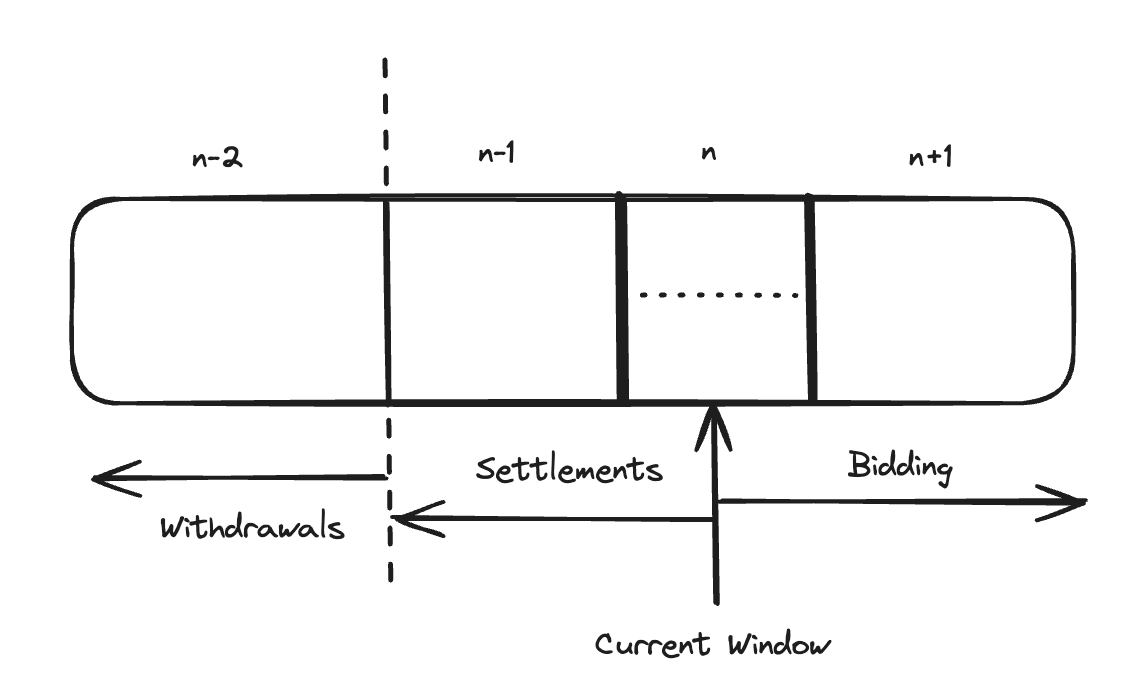Current window number
The window number for a given L1 block can be calculated via the following formula, whereblocksPerWindow is equal to 10 and blockNumber is the L1 block number for which the bidder wants to bid:
Minimum Deposit
Since deposits are split across L1 blocks, bidders have to deposit at least 10 times the amount they want to bid for a single block.Withdrawal Time
The earliest withdrawal time can be calculated as the withdrawal start time, n-2 windows which is 30 L1 blocks (360 seconds) and oracle lag which is 20 L1 blocks (240 seconds) totalling 600 seconds, or 10 minutes. Therefore, the total time before funds can be withdrawn is approximately 50 blocks (10 minutes) from the initial deposit.Deposit/Withdrawal Flow

Diagram Description
Timeline of Blocks
- The horizontal axis represents a sequence of windows.
- Windows are labeled as
n-2,n-1,nandn+1, indicating their position relative to the current windown.
Current Window
- The “Current Window” is the interval within which bidding occurs.
- The window consists of 10 L1 blocks.
Bidding Phase
- Bidding occurs in the current window, starting from the current block
nand extending into the future blocks (n+1, etc.). - The arrow labeled “Bidding” points to the right, indicating that bidding continues into future blocks.
Settlements Phase
- Settlements happen after the bidding window closes.
- The arrow labeled “Settlements” points downward, showing the transition from the bidding phase to the settlement phase.
Withdrawals Phase
- Withdrawals occur after settlements are completed.
- The arrow labeled “Withdrawals” points to the left, indicating the final phase where bidders can withdraw their remaining funds.

